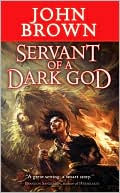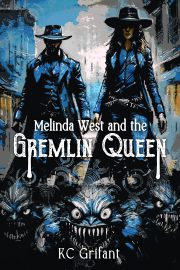Key Conditions for Suspense:
Part 21 – Patterns for Presenting the Problem: Elements 4-5
by John D. Brown
 The following is part of a continuing series. If you wish to start at the beginning, head to It’s All About The Reader.
The following is part of a continuing series. If you wish to start at the beginning, head to It’s All About The Reader.
As I said in my last post, the story begins when we present to the reader (a) the main character, (b) the problem she’ll face, and (c) a good reason why the character can’t or won’t walk away from the problem. If the main character is sympathetic and interesting, the reader will root for her and want to see what happens. If some of the particularities of the character and problem are surprising to the readers, it will generate more interest than if it’s something they’ve seen many times before.
In my last post, I introduced options for three elements of presenting the problem of your story:
- Number of scenes to present the problem
- Straight or twist presentation
- Central problem or a subplot problem start
In this post, I’ll finish up with options for the last two elements:
- The reason why the hero can’t or won’t walk away
- Size of the presentation phase (proportion)
The reason why the hero can’t or won’t walk away
If our character could just walk away and avoid all the risks, dangers, and troubles of a problem, then we as readers would expect them to do so. Of course, if the hero does walk away, then there is no story. So there must be a good reason for our hero to face the problem. Our fourth set of options center on these reasons.
There are usually three reasons why someone would be locked into dealing with a problem:
- Physical
- Moral and value
- Professional
Physical reasons are simply those that physically force people into facing the problem. The hero is stuck on a runaway train going 80 mph. She is on an airplane thousands of feet up with terrorists. She is on a ship when it begins to sink. She’s behind enemy lines. The villain wants her dead and seems to have no problem finding her. In these situations, something physical is preventing the character from avoiding the problem. It doesn’t matter whether she wants to solve the problem or not, she’s going to have to deal with it.
On the other hand, there are situations where our characters have a choice.
The character might have strong moral reasons that compel him to face the problem. Maybe a child is in danger. In this situation, the hero does something bad by not acting. In another sense, the character might lose something of great value of he doesn’t act. Maybe someone he loves will be hurt or die if he fails to deal with the issue. He can choose to walk away, but the moral costs would be too high.
A character might also choose to engage the problem for professional reasons. These characters try to solve problems because it’s their job. Cops track down killers. Soldiers go into war. Bounty hunters chase folks that jump bail.
Any one of these reasons is sufficient. But your character can also be motivated by a mix.
There are other variations to consider. These motivations can be presented in the same scene as the problem, or they can be presented in a separate scene. There might be some element of history to this (the hero’s had to deal with this villain before), or it might all be new. Furthermore, sometimes the hero is motivated from the get-go, but sometimes he is reluctant or even unwilling and needs a shove. For example, in The Good Guy our hero takes about one paragraph to decide he’s going to tackle the problem head on. There’s no reluctance to act. On the other hand, in another story you might have a hero who doesn’t want to engage at first. This may require a scene or two that gives him the motivation.
What will lock your hero into dealing with the problem?
Size of the presentation phase (proportion)
How long should the presentation phase be?
You’ll read some story structure models that claim a story should have a 25-50-25 structure. The presentation of the problem should be about 25% of the story. The resolution should be 25%. And the struggle should take roughly 50%.
The problem is that the rigid 25-50-25 proportion doesn’t hold up very well when tested against actual stories. Look at the stories below:
- Hunger Games finishes the presentation phase 8% of the way into the novel.
- The Good Guy finishes the presentation phase 4% of the way in.
- TV episodes of The Mentalist routinely finish the presentation phase less than 2% of the way in, but in one episode they threw in an extra case and took 30% of the time.
- The Help finishes its presentation 27% of the way in.
- Monster Hunter International finishes its presentation phase 28% of the way in.
Quite a range. And there are a lot of stories finishing the presentation phase at all points in between.
What this says to me is that the 25-50-25 rule is something that someone cooked up without checking reality. Or, at least, the reality of today’s fiction market.
It might be that a presentation phase of 35% to 50% of the whole might make it difficult to guide the reader into the pitch of emotion that’s necessary for a climax. Maybe not. I haven’t analyzed any stories that have such big presentation phases yet.
What I can conclude is that some stories get right into the central problem while others present subplots or multiple scenes that build to the central problem first. And all of them can work.
How big is your presentation phase going to be? Until I find stories with different proportions that work for me, I’m going to try to keep my presentation phases under 30%. And if I’m not doing anything complex, I’m going to try to keep them below 10%. I’m going to do this not because this is the best way. I’m going to do this because I tend to like stories that get started quickly. Your tastes, and the tastes of your readers, may vary.
No one right option
As you can see, there are a lot of variations to the presentation phase. The key thing to remember is than any of these variations can work. None is intrinsically better than another. So don’t fall into a rigid plot formula trap.
Instead, keep in mind what you’re trying to accomplish in the presentation phase. Then choose the options that excite you the most for the story you’re working on and make it is as interesting as possible.
In the next post, I’ll introduce patterns for the struggle phase.
Happiness,
John
•••
 John Brown is an award-winning novelist and short story writer. Servant of a Dark God, the first book in his epic fantasy series, was published by Tor Books and is now out in paperback. Forthcoming novels in the series include Curse of a Dark God and Dark God’s Glory. He currently lives with his wife and four daughters in the hinterlands of Utah where one encounters much fresh air, many good-hearted ranchers, and an occasional wolf.
John Brown is an award-winning novelist and short story writer. Servant of a Dark God, the first book in his epic fantasy series, was published by Tor Books and is now out in paperback. Forthcoming novels in the series include Curse of a Dark God and Dark God’s Glory. He currently lives with his wife and four daughters in the hinterlands of Utah where one encounters much fresh air, many good-hearted ranchers, and an occasional wolf.
For a list of all of the posts in this series thus far, click on the “John D. Brown” tag.


